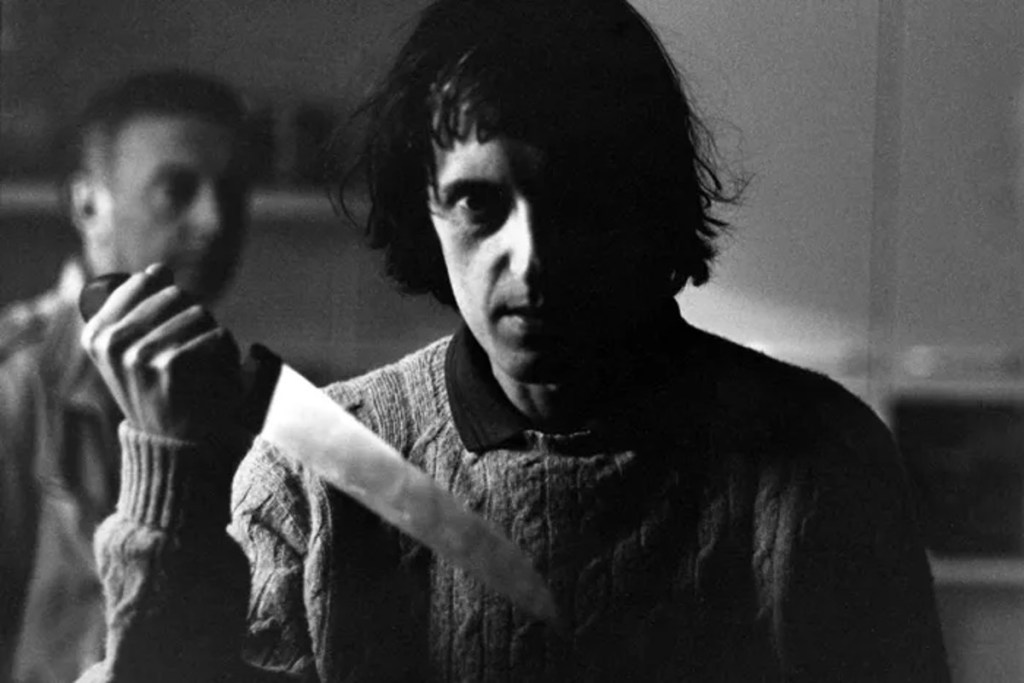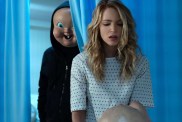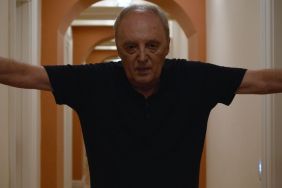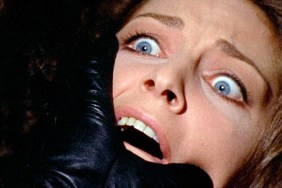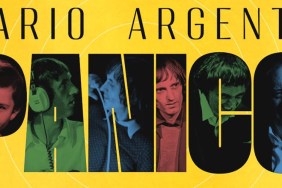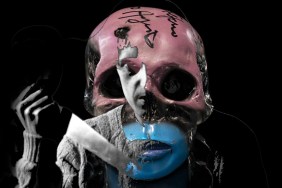Simone Scafidi’s Dario Argento Panico documents the great Italian horror maestro’s career through the years. A director of genre classics such as Suspiria, Opera, Four Flies on Grey Velvet, Tenebrae, and Deep Red, Argento has solidified his reputation as one of horror’s most visually exciting names.
The jumping-off point for this documentary is following a present-day Argento as he heads to a hotel to write his latest movie. It’s revealed this has been part of his routine for decades regarding writing. He enjoys the isolation and its effect on him and his writing.
During an opening car ride to this out-of-the-way hotel, Scafidi makes a creative flourish by showing us Dario’s eye for the world, with recreations of the director’s most alluring shots along the way. Then Dario seemingly snaps out of this daydream to curse how long the journey is taking. Throughout these modern-day scenes, there’s a cheeky infusion of the dreamlike quality found in Argento’s most famous works. The lines slightly blurring between fiction and reality, only clear when the man himself allows it.

There are a few talking heads involved in Dario Argento Panico, including Guillermo Del Toro, Gaspar Noe, Nicholas Wending Refn, Goblin’s Claudio Simonetti, and Dario’s family members, but the most insightful and informative moments come from the man himself. Both in archive interviews and in the more reflective current-day footage. While we never get to dive deep into his technical prowess and process (Noe, Refn, and Del Toro do examine it in wordy gushes), you get a really clear idea of his motivations and passions as a director.
We learn quickly that two things drove Argento’s career. Beauty and fear. He recalls doing his homework as a child, sitting in the corner peering at the women getting ready for photo shoots with his famous photographer mother Elda Luxardo. Argento claims that he learned how to frame women on screen through his mother’s work, capturing the beauty of icons such as Sophia Loren.
Elsewhere, he and several family members describe his obsession with fear, and, more specifically, panic. Argento doesn’t just create tomes of panic-inducing horror; he lives for it. There’s a fascinatingly morbid archive interview where he almost casually tells the interviewer of the time he was often compelled to hurl himself out of a particular window, and in sharing this with a psychologist, he was told to put a wardrobe in front of said window as a deterrent whenever the thought came up. Argento tells this story in such a way you can tell he finds the whole thing as fascinating as it is frightening.
He makes pains to mention he was feeling absolutely fine at the time, his life was going splendidly, but still, that compulsion was strong enough to strike a chord with him. It’s unsurprising that Argento talks in this manner about otherwise controversial subjects in Dario Argento Panico. Much is made of his use of his daughter Asia Argento as a lead for some of his movies, especially those with sexual content. Both Dario and Asia speak about their time working together with pride, and Asia’s story about her grandmother visiting the Phantom of the Opera set during the filming of her sex scene is almost surreal.
Being a documentary about Dario Argento, you’d be forgiven for thinking it’d be a fawning fluff piece, and while there would be nothing wrong with that if this is all it was, having such honesty about his thoughts, feelings, and motivations in a way that doesn’t paint it as some ”woe is me the tortured artist” empathy piece really adds something. It’s repeatedly stated by those who know him that Dario is primarily guarded, but open in surprising ways. His daughters talk of him with genuine affection, and even his first wife seems lost in a moment, talking about how she’d fallen for him when they were both young.
There’s talk of Dario’s love and need for family get-togethers, and his daughters Fiore and Asia mention his devotion to family even in trying times. An anecdote from Asia about Dario’s reaction to her going off to direct in America instead of starring in his latest film paints a slightly sad picture of the dynamic. Dario, at one point, says his aim in directing was to be loved, and that clearly runs through everything in his life, so it hurts when he doesn’t feel that love is there as he sees it.

Of course, there’s plenty of chatter about the films. In all honesty, I’m quite glad it didn’t lean too heavy on those because the best part of Dario Argento Panico isn’t in seeing famous friends wax lyrical about Argento’s masterworks (though I’d happily sit and listen to Del Toro, Noe, and Refn chat about horror for hours), but the stuff about the man behind them.
Dario Argento Panico should probably have been two separate documentaries. One for the routine discussion of his work and one that dives deep into the man and his genuinely fascinating life. The balance of making one documentary with both sides is difficult, and some stretches feel uneven or underexplored. There’s relatively little talk of late-career Argento or the perceived failures within, and given how Argento comes across in the documentary, it’s pretty understandable that this is dismissed somewhat.
Still, Dario Argento Panico gave me a fresh appreciation for a director I greatly admired already. When Guillermo Del Toro can sit there and say a horror icon like Argento looks like a ghoul and have it sound like a proclamation of love, you know just how stubbornly true to himself Argento has remained throughout his career.
Score: 8/10
As ComingSoon’s review policy explains, a score of 8 equates to ”Great”. While there are a few minor issues, this score means that the art succeeds at its goal and leaves a memorable impact.
